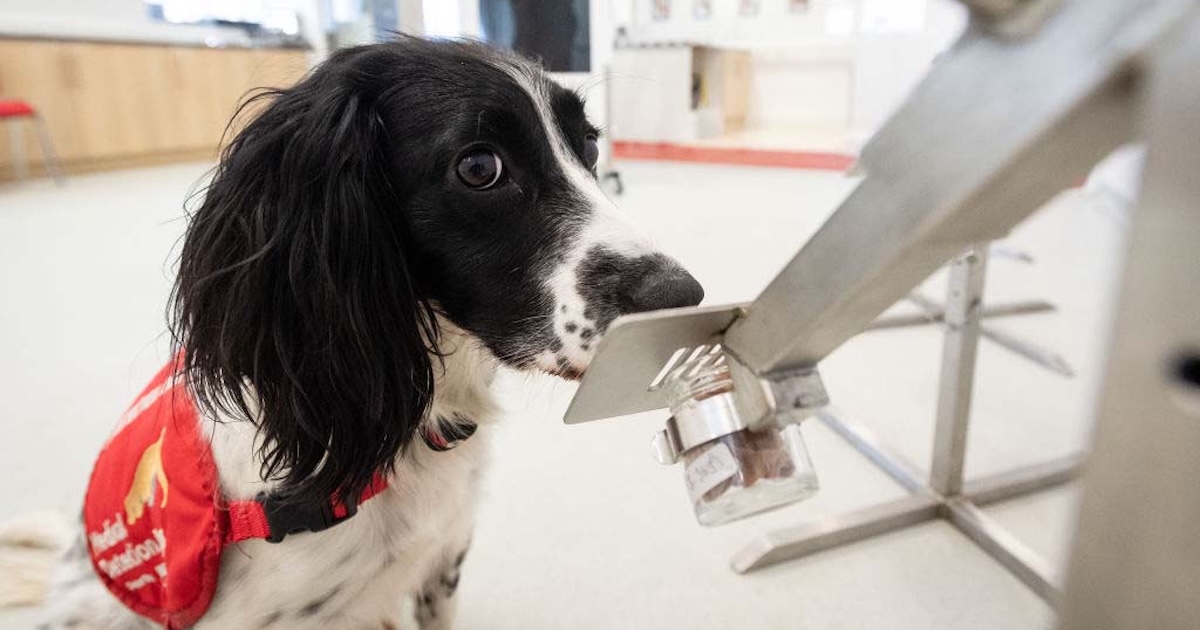
Discovery Behavioral Health, which operates 130 residential and outpatient treatment programs nationwide, was focused on delivering exceptional in-facility care while seeking innovative ways to enhance its post-discharge patient engagement.
THE CHALLENGE
With hundreds of patients completing treatment monthly, staff recognized an opportunity to strengthen follow-up capabilities. Discovery's alumni coordinators primarily were focused on providing responsive support to former patients who reached out, which aligned with the organization's patient-centered approach at that time.
Discovery identified a strategic opportunity to gain greater visibility into its patients' post-discharge journeys. By implementing a more structured follow-up system, it could gather valuable insights into patient outcomes after they left facilities and provide more proactive support.
This would allow staff to better understand the effectiveness of discharge planning and identify opportunities for continuous improvement in the care continuum.
"We recognized proactive monitoring could enhance our ability to support patients during the critical post-discharge period, potentially identifying needs before they escalated and ensuring patients remained connected to appropriate care resources. By strengthening these connections, we could better support patients in adhering to their discharge plans, which are vital components of their treatment journey," said Rachel Wood.
Wood is vice president of learning health systems at Discovery Behavioral Health. She holds a Ph.D. in clinical psychology. As a licensed clinical psychologist, she is committed to advancing and innovating approaches to treatment in the behavioral health field.
In her current position, she focuses on providing leadership and oversight to Discovery's advanced learning health system, maintaining and improving infrastructure for data capture and analysis so that it can be evaluated to inform practice across Discovery sites.
She also oversees the organization's deployment of evidence to improve care, access, outcomes and long-term recovery.
"Additionally, we saw opportunities to optimize our patient acquisition process," she continued. "Our commitment to providing comprehensive care meant we wanted to ensure former patients who might benefit from additional treatment could easily reconnect with our services."
Staff also recognized systematic follow-up data could further strengthen the evidence-based approach by consistently tracking important indicators like depression scores, anxiety levels, medication adherence and protective factors that predict successful recovery, she added.
"These opportunities collectively drove our decision to leverage technology to enhance the continuity of care, improve outcomes, optimize readmission pathways, increase access to care and support relapse prevention," Wood said.
PROPOSAL
Discovery decided on a technology-driven solution to the challenge to enhance its post-discharge patient engagement strategy. The organization was exploring ways to gain greater visibility into patient outcomes after treatment and evolve from a primarily responsive approach to a more proactive model of continued care.
"The proposal emphasized that implementing this technology would enhance the post-discharge care model, providing valuable connections during what our care teams recognized as a critical transition period after treatment," Wood explained. "It would maintain our high clinical quality and standards of care while providing valuable data about treatment outcomes that could inform future enhancements to care protocols.
"Most important, it would establish an early identification system to connect with patients who might benefit from additional support before challenges escalated, potentially preventing relapses and creating smoother pathways to additional care when needed," she added.
MEETING THE CHALLENGE
The provider organization implemented Discovery 365, or D365, which is IT vendor Videra Health's AI-assisted video assessment platform white-labeled for Discovery Behavioral Health. This system was used to create unique and comprehensive one-year post-discharge monitoring programs for patients leaving the mental health, eating disorder and substance use disorder treatment programs.
"The implementation process was straightforward and comprehensive – all patients discharged from our programs were automatically enrolled in D365 upon discharge through an integration with our EHR," Wood explained.
"This universal enrollment ensured complete coverage of our patient population rather than a selective approach that might miss individuals who could benefit from additional support," she said.
The program followed a carefully designed cadence of patient check-ins: 48 hours after discharge (for immediate transition support), weekly for the first month (when adjustment to post-treatment life is most significant) and then monthly for the remainder of the first year.
"D365 integrated directly with our Kipu EHR, creating a seamless connection between our clinical documentation and the follow-up program," Wood noted. "This integration was crucial as it automatically maintained patient records and intelligently recognized changes in patient status.
"For example, if a patient returned to treatment, the system would automatically adjust the follow-up sequence appropriately – stopping, starting or modifying the assessment schedule based on the patient's current treatment status without requiring manual intervention," she continued.
The check-ins themselves varied in content depending on where patients were in their recovery journey, but all focused on supporting post-program adjustment, understanding ongoing needs, facilitating transitional care and identifying any challenges patients faced after leaving the program.
"Each assessment included both standardized validated measures and estimates – like PHQ-9 for depression and GAD-7 for anxiety – as well as video-based questions where patients could respond in their own words," Wood said. "When patients completed their assessments, the Videra AI technology analyzed both their responses to standardized measures and their video responses, examining factors like facial expressions, voice tone and language use to identify signs of emotional distress, suicidal ideation or relapse risk.
"If concerning patterns were detected, the system would automatically generate alerts for our clinical team, allowing for timely intervention and support," she continued.
"An important feature of the platform was its ability to provide resources directly within the system. If patients indicated they needed support, referrals or other resources, these could be provided within the D365 platform itself, creating a comprehensive support system rather than just a monitoring tool."
This capability helped bridge the gap between assessment and intervention, ensuring identified needs could be addressed quickly.
"The entire system operated with minimal additional staffing requirements, as the technology handled the outreach, assessment delivery and initial risk screening automatically," Wood explained. "Our clinical team then could focus their valuable time and expertise on the patients who demonstrated the greatest need for follow-up care."
RESULTS
Discovery has achieved exceptional engagement with its patients through the D365 program, Wood reported.
"We have 11,520 active patients, have contacted 42,914 patients and created 948,193 touchpoints," she said. "We've achieved 5,335 patients engaging one or more times with their platform.
"The technology has been particularly effective at identifying opportunities for additional support, generating 9,915 total alerts across 15 different alert types ranging from clinical to operational to social determinants of health," she continued. "These alerts appeared in 6,607 sessions, meaning multiple insights were often captured in single patient interactions."
The high volume of interactions demonstrates the scalability of the technology and its ability to maintain continuous patient connection post-discharge, enhancing the organization's traditional care models, she added.
"One of our most impressive success metrics is the efficiency gained for our healthcare providers," Wood noted. "The platform has optimized an estimated 35,261 hours of staff time through automation. This breaks down to 31,606 hours saved on contacting patients and 3,655 hours saved from automated sessions rather than in-person evaluations.
"The automated touchpoints and sessions allow for greater scaling of post-discharge engagement than would be possible with normal facility staff resources alone," she continued.
"This efficiency gain is substantial and represents a key value proposition of the technology – allowing providers to focus their specialized expertise on patients who need direct intervention while ensuring all patients remain connected to our care system."
On another note, the technology has demonstrated meaningful clinical improvements for patients.
"Specifically, patients with higher engagement in the D365 program – more than 50% completion rate – showed stronger recovery outcomes, with better protective factors and lower relapse rates compared with those with lower engagement," Wood reported. "The platform also measures recovery across six domains through a recovery quotient.
"Higher scores indicate more protective factors – predicting sustained recovery," she continued. "The data shows the recovery quotient at discharge strongly predicts outcomes over the next year, with patients having a low initial recovery quotient staying lower than those with high initial recovery quotient."
There's also a strong correlation between the recovery quotient and standardized mental health measures: depression (PHQ-V) with -0.680 correlation, anxiety (GAD-V) with -0.656 correlation and trauma (PCL-V) with -0.665 correlation, she added. These numbers demonstrate the platform's assessment metrics align well with established clinical measures, she said.
"Further, the technology has identified significant opportunities for both optimized patient journeys and expanded care access," Wood explained. "They've identified 2,231 referral needs and surfaced these to care teams. Additionally, they found 101 patients expressing interest in additional treatment and 172 patients requesting information for friends seeking care.
"This translates to approximately $505,000 in optimized care coordination through seamless readmission pathways and $860,000 in value opportunity through referrals, based on an estimated average patient connection cost of $5,000 per patient through digital channels," she continued. "These figures demonstrate the technology not only improves clinical outcomes but also provides tangible financial benefits while ensuring patients can easily access the care they need."
ADVICE FOR OTHERS
Provider organizations must set clear expectations from the beginning, Wood advised.
"Make post-discharge monitoring technology a seamless part of your care protocol by introducing it to patients early in their treatment journey," she said. "When patients understand this is a standard part of your care model rather than an optional add-on, engagement rates improve significantly. Explain how the automated check-ins are designed to support their recovery and maintain connection with their care team."
And she said it's key to focus on the patient experience.
"The most successful implementations balance clinical needs with patient experience," Wood said. "Avoid creating an interrogation-like atmosphere with too many or irrelevant questions. Instead, design touchpoints that feel supportive and patient-centered. Patients should feel heard and cared for, not monitored.
"The data shows patients appreciate knowing their provider is invested in their long-term recovery, with many reporting the technology makes them feel supported during the transition from intensive treatment," she concluded.
Follow Bill's HIT coverage on LinkedIn: Bill Siwicki
Email him: bsiwicki@himss.org
Healthcare IT News is a HIMSS Media publication.
WATCH NOW: Four provider organizations that excel at telehealth and equity


